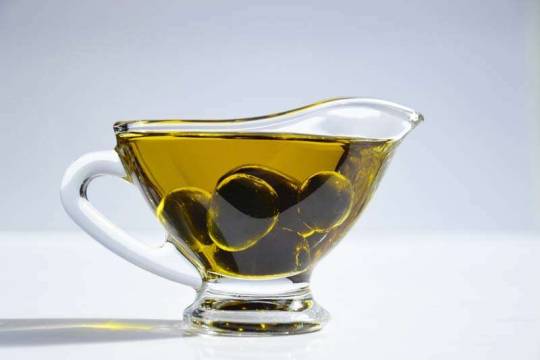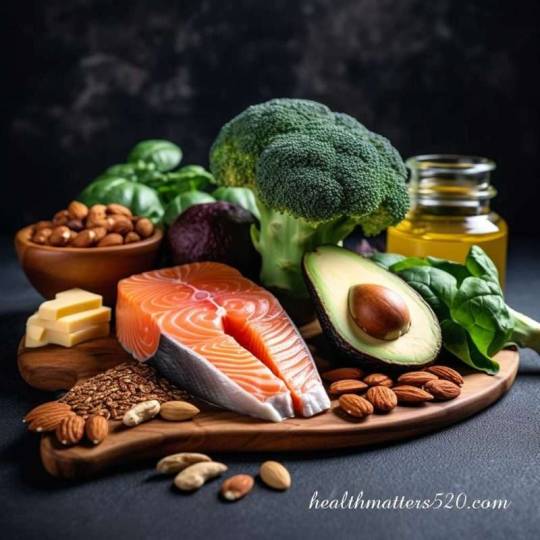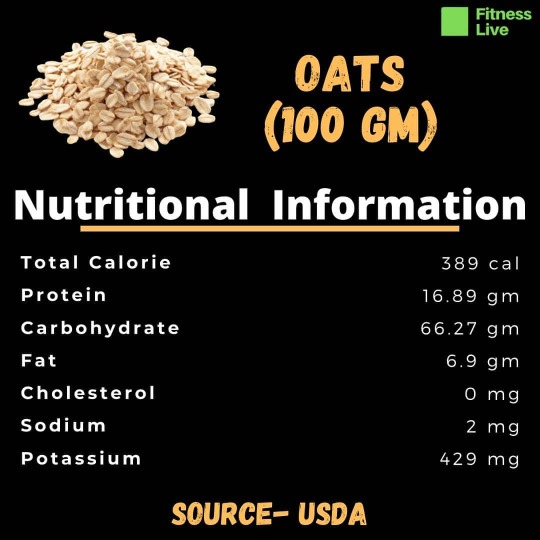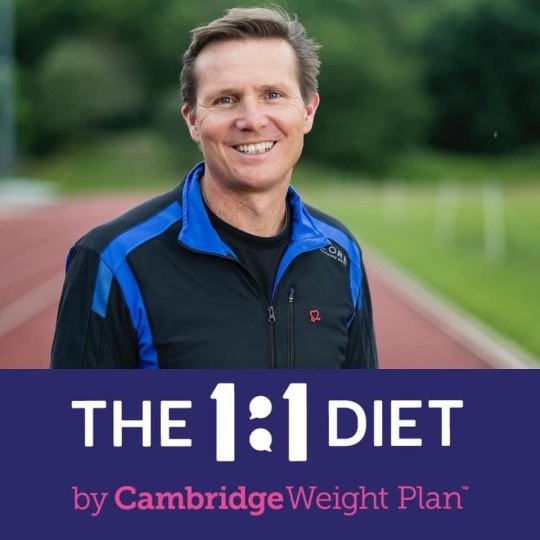#dukandiet
Text
Popular Health Related Diets: An Overview of Characteristics, Benefits, and More

Greetings, health-conscious readers! Welcome to an enlightening journey into the world of popular diets. In this blog post, we will delve into the significance of diet in relation to our overall health and well-being. As the saying goes, "You are what you eat," and it holds true that the food we consume plays a crucial role in shaping our physical and mental health.
A balanced and nutritious diet is the foundation of a healthy lifestyle. The food we consume serves as fuel for our bodies, providing essential nutrients, vitamins, and minerals that support vital functions. Moreover, the right dietary choices can help prevent chronic diseases, maintain a healthy weight, boost energy levels, and promote overall well-being.
Throughout this blog post, we will explore a diverse range of popular diets, including the Mediterranean diet, Keto diet, Paleo diet, Vegan diet, Vegetarian diet, Atkins diet, DASH diet, Flexitarian diet, Dukan diet, Brat diet, South Beach diet, GOLO diet, Anti-Inflammatory diet, Low FODMAP diet, Carnivore diet, and even the Brazilian diet.
By examining the characteristics, benefits, and considerations of each diet, you will gain valuable insights into their potential impact on your health and lifestyle. However, it's important to remember that individual needs and preferences vary. It is always advisable to consult with a healthcare professional or registered dietitian before embarking on any new dietary regimen.
So, without further ado, let's embark on this enlightening journey through the fascinating world of popular diets. Discover the diverse approaches to nutrition and find the one that resonates with your unique needs and aspirations. Together, let's unlock the power of food and nourish our bodies for a healthier and more fulfilling life.

Mediterranean Diet
The Mediterranean diet is renowned for its emphasis on wholesome, plant-based foods, healthy fats, and moderate consumption of lean proteins. Drawing inspiration from the traditional eating patterns of countries bordering the Mediterranean Sea, this diet has gained recognition for its numerous health benefits.
At the core of the Mediterranean diet are plant-based foods, including fruits, vegetables, whole grains, legumes, nuts, and seeds. These nutrient-rich foods provide a wide array of vitamins, minerals, and antioxidants that support overall health and well-being. Additionally, the Mediterranean diet encourages the consumption of healthy fats, primarily from olive oil and fatty fish, which are rich in omega-3 fatty acids.

Benefits
One of the key benefits of the Mediterranean diet is its positive impact on cardiovascular health1. Numerous studies have shown that following this dietary pattern can reduce the risk of heart disease, lower cholesterol levels, and improve blood pressure control. The abundance of fruits, vegetables, whole grains, and healthy fats in the Mediterranean diet contributes to these heart-protective effects.
Moreover, the Mediterranean diet is associated with increased longevity2 and a reduced risk of chronic diseases. The consumption of antioxidant-rich foods, such as colorful fruits and vegetables, along with the anti-inflammatory properties of the diet, may help combat oxidative stress and inflammation in the body. This, in turn, can help protect against conditions like diabetes, certain cancers, and neurodegenerative diseases.
Incorporating the Mediterranean diet into your daily life can be both enjoyable and fulfilling. Here are some sample meal ideas to inspire you:
- Breakfast: Start your day with a Greek yogurt topped with fresh berries, a sprinkle of nuts, and a drizzle of honey. Enjoy it with a side of whole grain toast.
- Lunch: Prepare a colorful salad with mixed greens, cherry tomatoes, cucumbers, olives, feta cheese, and a lemon-olive oil dressing. Pair it with a serving of grilled chicken or chickpeas.
- Dinner: Savor a Mediterranean-style grilled fish, such as salmon or sardines, seasoned with herbs and lemon. Serve it alongside a generous portion of roasted vegetables and a side of whole grain couscous or quinoa.
- Snacks: Opt for a handful of almonds or walnuts, fresh fruit, or vegetable sticks with hummus as healthy and satisfying snack choices.
Incorporating the Mediterranean diet into your daily life can be as simple as:
- Prioritizing plant-based foods in your meals, aiming for a variety of colorful fruits and vegetables.
- Using extra virgin olive oil as your primary source of fat for cooking and dressing.
- Including whole grains, such as brown rice, quinoa, and whole wheat bread, in your diet.
- Consuming moderate amounts of lean proteins, such as fish, poultry, and legumes.
- Limiting the consumption of red meat and processed foods.
- Enjoying meals in the company of loved ones, savoring the flavors and taking time to appreciate each bite.
By embracing the Mediterranean diet, you can nourish your body with nutrient-dense foods, protect your heart health, and reduce the risk of chronic diseases. So, why not embark on a culinary journey inspired by the vibrant and wholesome Mediterranean lifestyle?
Keto Diet
The ketogenic diet, or keto diet for short, has gained significant popularity in recent years. This dietary approach places a strong emphasis on high-fat, low-carbohydrate intake, with the goal of inducing a metabolic state known as ketosis. During ketosis, the body shifts from using carbohydrates as its primary fuel source to utilizing stored fats for energy.

Benefits
One of the key benefits associated with the keto diet is its potential for weight loss. By severely restricting carbohydrate intake and increasing fat consumption, the body enters a state where it burns fat more efficiently. This can lead to a reduction in body weight and body fat percentage. Additionally, the keto diet has been shown to help suppress appetite, which can further support weight loss efforts.
Another advantage of the keto diet is its potential to improve insulin sensitivity. By minimizing carbohydrate intake, blood sugar and insulin levels tend to stabilize, which can be beneficial for individuals with insulin resistance or type 2 diabetes. However, it's important to note that anyone with diabetes or other underlying health conditions should consult with a healthcare professional before starting the keto diet.
Beyond weight loss and improved insulin sensitivity, the keto diet has also shown promise in various therapeutic applications. Research suggests that it may be beneficial for individuals with epilepsy, as it can help reduce the frequency and severity of seizures. Additionally, some studies have explored the potential benefits of the keto diet for managing certain neurological conditions, such as Alzheimer's disease and Parkinson's disease. However, more research is needed in these areas.
Considerations
While the keto diet offers potential benefits, it's important to consider some considerations and potential challenges associated with this dietary approach. One of the main challenges is the significant restriction of carbohydrates, which may require careful meal planning and adjustment. This can be particularly challenging for those accustomed to a higher carbohydrate intake.
Additionally, the keto diet may not be suitable for everyone. Individuals with certain medical conditions, such as pancreatitis or liver disease, should avoid this dietary approach. Furthermore, the keto diet may lead to nutrient deficiencies if not properly planned, as it restricts many food groups that are rich in essential vitamins and minerals.
It's also worth noting that some people may experience side effects when transitioning to the keto diet. This can include symptoms such as fatigue, dizziness, and digestive issues, commonly referred to as the "keto flu." These symptoms typically subside as the body adapts to using fats as its primary fuel source.
In conclusion, the ketogenic diet can be a powerful tool for weight loss, improved insulin sensitivity, and potential therapeutic applications. However, it's important to approach this diet with caution and consider the potential challenges and individual suitability. If you are considering the keto diet, consulting with a healthcare professional or registered dietitian is highly recommended to ensure it aligns with your specific needs and goals.
Paleo Diet
The paleo diet, also known as the "caveman" or "hunter-gatherer" diet, takes inspiration from our ancestors' eating patterns. It focuses on consuming whole, unprocessed foods that mimic what our early human predecessors might have eaten. The fundamental principle of the paleo diet is to avoid processed foods, grains, legumes, dairy products, and added sugars, while emphasizing the consumption of lean meats, fish, fruits, vegetables, nuts, and seeds.

Benefits
One of the main benefits of the paleo diet is its potential to reduce inflammation in the body. By eliminating processed foods and refined sugars, which are known to contribute to inflammation, the paleo diet promotes the consumption of nutrient-dense foods that can help combat chronic inflammation. This can have positive effects on various aspects of health, such as reducing the risk of chronic diseases like heart disease, diabetes, and certain autoimmune conditions.
Additionally, the paleo diet has been associated with weight management and improved body composition. By focusing on whole, unprocessed foods and encouraging a higher intake of protein and healthy fats, the paleo diet can support satiety and help regulate hunger hormones. This can lead to better appetite control and potentially aid in weight loss or weight maintenance efforts.
Another advantage of the paleo diet is its emphasis on nutrient density. By prioritizing whole, unprocessed foods, the paleo diet tends to provide a wide range of essential vitamins, minerals, and antioxidants. This can help ensure a well-rounded nutrient intake and support overall health and well-being.
Limitations and Criticisms
However, it's important to consider some potential limitations and criticisms of the paleo diet. Critics argue that the strict elimination of entire food groups, such as grains and legumes, may lead to nutrient deficiencies if not carefully planned. These food groups can provide valuable nutrients, such as fiber, B vitamins, and minerals. Therefore, it's important to ensure adequate substitution and variety within the paleo diet.
Additionally, some people may find it challenging to adhere to the paleo diet in modern society, where processed and convenience foods are abundant. The restrictive nature of the diet may also make it socially challenging in certain situations, such as dining out or attending social gatherings.
In conclusion, the paleo diet promotes the consumption of whole, unprocessed foods similar to what our ancestors ate. It offers potential benefits such as reducing inflammation, supporting weight management, and improving nutrient density. However, it's important to address the potential limitations and criticisms of the diet, such as the potential for nutrient deficiencies and the challenges of adhering to its strict guidelines. As with any dietary approach, individual considerations and guidance from a healthcare professional or registered dietitian are advised.
Vegan Diet
The vegan diet is a plant-based dietary approach that excludes all animal products, including meat, fish, dairy, eggs, and honey. It places a strong emphasis on the consumption of plant-based foods, such as fruits, vegetables, whole grains, legumes, nuts, and seeds. Veganism goes beyond just a dietary choice and encompasses a lifestyle that aims to minimize harm to animals and promote environmental sustainability.

Benefits
One of the primary benefits of following a vegan diet is its positive impact on animal welfare. By abstaining from the consumption of animal products, vegans choose to support a lifestyle that reduces the demand for animal exploitation in the food industry. This ethical consideration aligns with the belief that animals should not be used for human consumption and allows individuals to make choices that align with their values.
Read the full article
#antiinflammatorydiet#Atkinsdiet#bratdiet#Braziliandiet#carnivorediet#DASHDiet#dukandiet#flexitariandiet#golodiet#ketodiet#lowFODMAPdiet#mediterraneandiet#paleodiet#SouthBeachdiet#vegandiet#vegetariandiet
0 notes
Text
Nutrition for Seizure Control: Dietary Therapies

"Discover effective Dietary Therapies for Seizure Control. Learn about the Keto diet, Nutrition approaches, and more. Trust our expertise in Diet and Seizures."

Dietary Therapies and Seizure Control
Seizure control is a crucial aspect of managing epilepsy, and while medications can be effective, they may not work for everyone. This is where diet comes in. A healthy and balanced diet can provide the necessary nutrients and calories needed for overall health while also helping to control seizures.
Certain diets have been found to be particularly beneficial for seizure reduction in some individuals. For example, the Atkins diet emphasizes low carbohydrate intake which has shown promise in reducing seizures. The glycemic index of foods - which measures how quickly they raise blood sugar levels - may also play a role in seizure control.
For pregnant women with epilepsy, maintaining a healthy diet and reducing sugar intake can help prevent seizures during pregnancy. It's important to note that any dietary changes should always be discussed with a healthcare professional first.
So how exactly does diet affect seizures? The answer lies in the brain's electrical activity. When certain triggers cause abnormal electrical activity in the brain, it can lead to a seizure. Research suggests that certain foods or lack thereof may trigger this abnormal activity.
For example, high-fat diets such as the ketogenic diet have been shown to reduce seizures by altering the metabolism of glucose in the brain. On the other hand, consuming too much sugar or carbohydrates may increase seizure activity due to their effect on blood sugar levels.
In addition to specific diets, simply maintaining a healthy and balanced diet can help improve overall health and potentially reduce seizure frequency. This includes consuming plenty of fruits, vegetables, lean proteins, and whole grains while limiting processed foods and added sugars.
It's clear that there is a strong relationship between diet and epilepsy/seizure control. While more research is needed to fully understand this connection, incorporating healthy eating habits into your daily routine may be an effective way to manage seizures alongside medication.
The Role of Dietary Therapies in Managing Epilepsy and Seizure Disorders
Dietary therapies have become increasingly popular in recent years as a treatment option for managing epilepsy and seizure disorders. While medications are often the first line of defense, dietary therapies can be an effective complement to medication or even used as a standalone treatment option. Now let us explore the role of dietary therapies in managing epilepsy and seizure disorders.
Effective Treatment Option
Dietary therapies have been shown to be an effective treatment option for managing epilepsy and seizure disorders. The ketogenic diet is one of the most well-known dietary therapies for epilepsy.
It involves consuming high amounts of fat and low amounts of carbohydrates, which puts the body into a state of ketosis. This state has been shown to reduce seizures in some people with epilepsy.
Other dietary therapies include the modified Atkins diet and the low glycemic index treatment. These diets also focus on reducing carbohydrate intake while increasing protein and fat intake. Studies have shown that these diets can also be effective in reducing seizures.
Working with Healthcare Providers
It is important to work closely with a healthcare provider when considering dietary therapies as a treatment option for epilepsy and seizure disorders. A healthcare provider can help determine if a particular diet is appropriate based on individual needs and medical history.
For example, while the ketogenic diet may be effective for some people with epilepsy, it may not be appropriate for everyone. It requires strict adherence to specific macronutrient ratios, which can be difficult to maintain long-term without proper guidance from a healthcare provider.
Healthcare providers can monitor individuals on dietary therapies to ensure they are meeting their nutritional needs while still adhering to the prescribed diet plan.
How the Ketogenic Diet Works in Treating Epilepsy
The ketogenic diet, or keto diet, is a high-fat, low-carbohydrate diet that has been used to treat epilepsy since the 1920s. It works by forcing the body to use ketones, a type of molecule produced from fat, as its primary source of energy instead of glucose.
This metabolic shift can reduce seizures in some people with epilepsy, although the exact mechanism is not fully understood.
What is a Ketogenic Diet?
A ketogenic diet typically consists of high-fat foods such as meat, fish, eggs, and dairy products; low-carbohydrate vegetables such as leafy greens and broccoli; and small amounts of nuts and seeds.
The goal is to limit carbohydrate intake to less than 50 grams per day while increasing fat intake to approximately 70-80% of daily calories. This forces the body into a state called ketosis, where it burns fat for fuel instead of glucose.
How Does the Ketogenic Diet Help Epilepsy?
The exact mechanism by which the ketogenic diet reduces seizures in some people with epilepsy is not fully understood. However, there are several theories:
Ketones may have an anticonvulsant effect on brain cells.
The keto diet may increase levels of GABA (gamma-aminobutyric acid), a neurotransmitter that helps calm brain activity.
The keto diet may reduce inflammation in the brain.
While research on the effectiveness of the keto diet for treating epilepsy is limited and further studies are needed to confirm its benefits, many people with epilepsy who have not responded well to medication have reported significant improvements after starting the keto diet.
What Does a Keto Diet for Epilepsy Look Like?
A typical day on a Ketogenic Diet for Epilepsy might include:
Breakfast: Scrambled eggs cooked in butter with bacon or sausage
Lunch: Grilled chicken salad with avocado and olive oil dressing
Dinner: Baked salmon with roasted broccoli and cauliflower
Snacks: Cheese sticks, hard-boiled eggs, or a handful of almonds
It is important to note that the keto diet should only be undertaken under the supervision of a healthcare professional, as it can cause side effects such as constipation, nausea, and fatigue. It may not be appropriate for people with certain medical conditions such as pancreatitis or liver disease.
Sponsored...
⚡️The Ultimate Keto Meal Plan⚡️

>>> Get 21 Free Keto Recipes (Yummy) >>>
Today, We’ve rounded up 21 of our favorite Keto dishes for breakfast, lunch, and dinner. You’re going to want to bookmark this list, as these recipes are totally drool-worthy.
All recipes come with simple ingredients and easy instructions and you can Download everything today for Free.
Sounds good?
==> Just Click Here to Download your FREE copy of 21 Yummiest Keto Recipes.
Your family and friends will love these Keto recipes...
And everything is 100% keto-approved and proven to speed up your ketosis.
Just follow the instructions below and download your Free Keto cookbook :)
- Click Here to get to the Download page.
- Enter your details about where to send the recipes.
- Check your email address in the next few minutes (also check your spam filter) and enjoy your new recipes!
Special Considerations for Implementing a Special Diet for Seizure Management
Consult with a healthcare professional before implementing any special diet for seizure management.
Before starting any special diet for seizure management, it is important to consult with a healthcare professional. A doctor or dietitian can help determine if a special diet is appropriate and safe for the individual based on their medical history, age, and weight. They can also provide guidance on which specific diet plan may be most effective.
Some diets that have been shown to be effective in managing seizures include the ketogenic diet, modified Atkins diet, and low glycemic index treatment. However, these diets are not suitable for everyone and should only be implemented under the supervision of a healthcare professional.
Consider the individual's age, weight, and medical history when choosing a diet plan.
When choosing a special diet for seizure management, it is important to consider the individual's age, weight, and medical history. For example, children may require more calories than adults due to their growing bodies.
Individuals with certain medical conditions such as kidney disease or liver disease may need to avoid certain types of diets.
It is important to consider the individual's lifestyle and preferences when choosing a special diet. For instance, some individuals may find it difficult to follow strict dietary restrictions long-term.
Monitor the individual's nutrient intake to avoid deficiencies or excesses that may trigger seizures.
Special diets for seizure management can sometimes lead to nutrient deficiencies or excesses if not properly monitored. It is important to track nutrient intake through regular blood tests and adjust the diet plan accordingly if necessary.
Certain nutrients that are commonly monitored include vitamin D, calcium, sodium, magnesium, and potassium. Deficiencies in these nutrients can increase the risk of seizures while excesses can lead to other health problems such as kidney stones or high blood pressure.
Keep track of the individual's progress and adjust the diet plan accordingly.
Monitoring an individual's progress on a special diet for seizure management is essential in determining its effectiveness. Regular check-ins with a healthcare professional can help identify any changes in seizure frequency or side effects.
If the diet plan is not effective, adjustments may need to be made. This could include changing the types of foods allowed on the diet or adjusting macronutrient ratios.
Be aware of potential side effects or complications associated with certain diets, such as gastrointestinal issues or kidney stones.
Special diets for seizure management can sometimes lead to side effects or complications. For example, a ketogenic diet may cause constipation, while a low glycemic index treatment may increase the risk of kidney stones.
It is important to be aware of these potential side effects and work with a healthcare professional to minimize them. In some cases, adjustments to the diet plan may be necessary to alleviate symptoms.
Educate the individual and their caregivers on how to properly prepare and follow the diet plan.
Proper education on how to prepare and follow a special diet for seizure management is essential for its success. This includes guidance on meal planning, food preparation, and portion sizes.
Caregivers should also be educated on how to recognize and respond to any potential problems such as seizures or side effects. Regular communication with healthcare professionals can help ensure that everyone involved in managing seizures is informed and prepared.
Foods That Can Trigger Seizures: What to Avoid in Your Diet
Artificial Ingredients in Processed Foods
Processed foods are often loaded with artificial ingredients that can trigger seizures. These additives include preservatives, artificial sweeteners, and food coloring. It's best to avoid processed foods altogether and opt for fresh, whole foods whenever possible.
If you do choose to consume processed foods, be sure to read the labels carefully and avoid any products that contain artificial ingredients.
Natural Foods That May Trigger Seizures
While many natural foods are healthy and safe for most people, some may trigger seizures in certain individuals. For example, avocados contain a chemical called persin that can cause seizures in some people.
Similarly, nuts like walnuts and pecans can also trigger seizures in some individuals. It's important to pay attention to your body's reactions to different types of food and avoid anything that seems to trigger seizure activity.
Meat High in Saturated Fat
Consuming meat that is high in saturated fat has been linked to an increased risk of seizures. This includes fatty cuts of beef, pork, lamb, and processed meats like bacon and sausage. Instead of these meats, try leaner options like chicken or fish. If you do choose to eat red meat, look for lean cuts like sirloin or flank steak.
Mayonnaise and Other Sodium-Rich Condiments
Mayonnaise is a popular condiment that is often used on sandwiches or as a dip for vegetables or chips. However, it contains high levels of sodium which can increase the risk of seizures in some individuals.
Other condiments like ketchup and soy sauce also contain high levels of sodium and should be consumed in moderation.
Research Studies on the Effectiveness of Special Diets for Seizure Management
Numerous Studies Have Been Conducted to Investigate the Effectiveness of Special Diets for Seizure Management
Epilepsy is a neurological disorder that affects millions of people worldwide. It is characterized by recurrent seizures, which can be debilitating and interfere with daily life.
While medication is the most common treatment for epilepsy, some patients do not respond well to drugs or experience side effects. As a result, researchers have investigated the effectiveness of special diets for seizure management.
Over the years, numerous studies have been conducted to investigate the relationship between diet and seizures. These studies have explored various diets, including the ketogenic diet, modified Atkins diet, low glycemic index treatment (LGIT), and others.
The results of these studies have been mixed, but there is evidence to suggest that certain diets may be effective in reducing seizure frequency and severity in some patients.
A Registered Dietitian Can Help Patients with Epilepsy Plan and Implement a Special Diet That Suits Their Individual Needs
If you are considering a special diet for seizure management, it's important to work with a registered dietitian who has experience working with patients with epilepsy.
A registered dietitian can help you plan and implement a special diet that suits your individual needs. They can also monitor your progress and make adjustments as needed.
Research Has Shown That Certain Diets May Reduce the Frequency and Severity of Seizures in Some Patients
One of the most well-known special diets for epilepsy is the ketogenic diet. This high-fat, low-carbohydrate diet has been shown to reduce seizure frequency in some patients. In fact, one study found that 38% of children who followed a ketogenic diet experienced a greater than 50% reduction in seizures.
Another study found that 32% of patients who followed a modified Atkins diet experienced a greater than 50% reduction in seizures. The modified Atkins diet is similar to the ketogenic diet but allows for slightly more carbohydrates.
Evidence Suggests That Special Diets May Be Particularly Effective for Children with Epilepsy Who Have Not Responded Well to Medication
Special diets may be particularly effective for children with epilepsy who have not responded well to medication. One study found that 38% of children who followed a ketogenic diet experienced a greater than 50% reduction in seizures.
Another study found that the modified Atkins diet was effective in reducing seizure frequency in children with refractory epilepsy.
Johns Hopkins is one of the leading institutions conducting research on the use of special diets for seizure management. The Johns Hopkins Ketogenic Diet Center has been providing dietary therapy for patients with epilepsy since 1993.
The center offers a range of special diets, including the ketogenic diet, modified Atkins diet, and LGIT.
Short-term and Long-term Adverse Events of Special Diets for Seizure Management
The modified Atkins diet has been proven to be effective in reducing seizure frequency in patients who do not respond to traditional antiepileptic drugs. However, like all other diets, it may cause some adverse effects.
Let us explore the short-term and long-term adverse events of special diets for seizure management.
Short-Term Adverse Effects of Modified Atkins Diet
The modified Atkins diet is a low-carbohydrate, high-fat diet that is often used to manage seizures. While it has been shown to be effective in reducing seizure frequency, it may cause some short-term adverse effects such as constipation, nausea, and vomiting.
Constipation is a common side effect of the modified Atkins diet. This happens because the body is not getting enough fiber from carbohydrates. To avoid constipation, patients are advised to drink plenty of water and include high-fiber foods such as vegetables in their meals.
Nausea and vomiting are also common side effects of the modified Atkins diet. These symptoms usually occur during the first few weeks of starting the diet and typically go away on their own after a few days.
Patients are advised to eat small meals throughout the day instead of three large meals and avoid foods that trigger nausea.
Long-Term Effects of Modified Atkins Diet
While studies have shown that a modified Atkins diet can reduce seizure frequency in just a few weeks, its long-term effects are not yet fully understood. Some studies suggest that prolonged use of this diet may lead to an increased risk of cardiovascular disease due to its high-fat content.
On the other hand, some studies have shown that there is no significant difference in lipid profiles between patients on a modified Atkins diet compared to those on a traditional ketogenic diet or control group.
Therefore, more research needs to be done before any conclusive statements can be made about the long-term effects of this type of diet.
Consult a Healthcare Professional Before Starting Any Special Diet
It is important to consult a healthcare professional before starting any special diet for seizure management. A healthcare professional can help determine if the modified Atkins diet is appropriate for you and monitor your progress while on the diet.
Special Diet Centers for Adults and Children with Epilepsy: What to Expect
Visiting a special diet center can be an essential step for adults and children with epilepsy who are looking to manage their seizures through dietary changes.
Read the full article
#absenceseizures#bratdiet#carnivorediet#complexpartialseizures#dogseizures#Dukandiet#golodiet#howmanycarbsinalowcarbdiet#howmuchcaffeineindietcoke#KetoDiet#Ketogenicdiet#mediterraneandiet#myoclonicseizures#psychogenicnonepilepticseizures#psychogenicseizures#seizures#seizuresindogs#seizuresinspanish#Today'sPaper#TodaysArticle#typesofseizures#whatcausesseizures#whatisvegandiet
0 notes
Link
Discover a healthy way to shed those extra pounds with the #DukanDiet! Say goodbye to fad diets and hello to sustainable weight loss. 🌱🏋️♀️ Click the link in our bio to learn more! #HealthyLiving #WeightLossGoals
0 notes
Text
28 day meal planner

#28 DAY MEAL PLANNER PDF#
#28 DAY MEAL PLANNER FREE#
For Women Printable diet and meal plans for women.
Low Fat Printable low-fat meal plans, foods lists and recipes.
Low Calorie Low calorie meal plans and recipes.
Low Carb Printable low carb meal plans, recipes, smoothies for weight loss and diabetics.
2500 Calorie 2500 Calorie meal plans, recipes and more.
Select a 2000 calorie meal plan from the list below.
2000 Calorie Printable 2000 calorie meal plans (PDF).
Select a 1900 calorie meal plan from the list below.
1900 Calorie Printable 1900 calorie meal plans (PDF).
Select a 1800 calorie meal plan from the list below.
1800 Calorie Printable 1800 calorie meal plans (PDF).
Select a 1700 calorie meal plan from the list below.
1700 Calorie Printable 1700 calorie meal plans (PDF).
Select a 1600 calorie meal plan from the list below.
1600 Calorie Printable 1600 calorie meal plans (PDF).
Select a 1500 calorie meal plan from the list below.
1500 Calorie Printable 1500 calorie meal plans (PDF).
1400 Calorie Which 1400 calorie meal plan are you looking for? Select a 1400 calorie meal plan below.
Select a 1300 calorie meal plan from the list below.
1300 Calorie Printable 1300 calorie meal plans (PDF).
1200 Calorie Select a 1200 calorie meal plan from the list below (Printable, PDF).
1100 Calorie Select an 1100 calorie meal plan from the list below (Printable, PDF).
Select a 1000 calorie meal plan from the list below.
1000 Calorie Printable 1000 calorie meal plans (PDF).
Select a 800 calorie meal plan from the list below.
800 Calorie Printable 800 calorie meal plans (PDF).
500 Calorie 500 Calorie meal plans, recipes and more.
Calorie based diet and meal plans, food lists.
#28 DAY MEAL PLANNER PDF#
Meal Plan Printable and PDF meal plans.
Anti-Inflammatory Diet Anti-Inflammatory diet types and food lists help beat the inflammation by consuming vegetables, fruits, whole grains, healthy fats, lean protein, spices, and foods rich in omega-3 acids.
Carnivore Diet Carnivore diet plans, food lists and recipes.
High Fiber High fiber diets, meal plans, foods lists and recipes for easier digestion.
Therapeutic Diets Therapeutic diet plans samples to help you have an idea of what nutritions are best for specific health conditions.
Brat Diet Brat diet plans, foods lists, recipes and more.
Liquid Diet Liquid diet meal plans and recipes for detox and weight loss.
Pescatarian Diet Pescatarian diet meal plans, food lists and recipes.
#28 DAY MEAL PLANNER FREE#
Gluten Free Gluten free diet plans, meal plans, dinner, lunch and dessert recipes.Low Sodium Diet Low sodium diet types, foods and original recipes for a healthier lifestyle.1200 Calorie Diet Plan Find printable 1200 calorie diet meal plans in various forms.South Beach Diet South Beach Diet meal plans, food lists and recipes.Raw Food Diet Raw food diet meal plans, food lists and recipes in PDF.Dukan Diet DukanDiet meal plans, food lists and recipes.Sirtfood Diet Sirtfood diet meal plans and recipes.Dash Diet Dash diet diet meal plans, food lists and recipes.Mediterranean Diet All types of Mediterranean diet and meal plans, food lists and recipes in PDF.Vegan Diet Printable vegan diet and meal plans.Vegetarian Diet All variations of printable and calorie based vegetarian meal plans.Select a keto meal plan based on your specific goal. Keto Diet All variations of printable and calorie based keto meal plans.Cheat Days Tips, meal plans and recipes for cheat day and day after cheat days.Diet Based Foods Diet-based printable food and shopping lists to help you lose weight.Medical Diet Foods Food lists to target specific medical conditions such as diabetes, digestive, heart and so on.Blood Type Diet Foods A blood type diet is followed by consuming foods based on a blood type such as O, A, B and AB types of blood.Electrolyte Foods Electrolyte based food lists to replenish the minerals in your body that conduct electrical charge.Micronutrient Foods Micronutrient food lists to target specific vitamin deficiency and vitamin gain goals.Macronutrient Foods Macronutrient food lists to target specific weight loss goals.Food Lists Diet specific food and grocery shopping lists.Trending Trending meal plans and recipes.

0 notes
Photo

• The oat, sometimes called the common oat, is a species of cereal grain grown for its seed, which is known by the same name.
• While oats are suitable for human consumption as oatmeal and oat milk, one of the most common uses is as livestock feed. Oats are associated with lower blood cholesterol when consumed regularly.
• Oats are among the healthiest grains on earth.
• They’re a gluten-free whole grain and a great source of important vitamins, minerals, fiber and antioxidants.
• Oats are a whole- grain food, known scientifically as Avena sativa.
• Oat groats, the most intact and whole form of oats, take a long time to cook. For this reason, most people prefer rolled, crushed or steel-cut oats.
• Instant (quick) oats are the most highly processed variety. While they take the shortest time to cook, the texture may be mushy.
• Oats are commonly eaten for breakfast as oatmeal, which is made by boiling oats in water or milk. Oatmeal is often referred to as porridge.
• They’re also often included in muffins, granola bars, cookies and other baked goods.
• Oats are high in the soluble fiber beta-glucan, which has numerous benefits. It helps reduce cholesterol and blood sugar levels, promotes healthy gut bacteria and increases feelings of fullness.
• Oats contain many powerful antioxidants, including avenanthramides. These compounds may help reduce blood pressure and provide other benefits.
https://www.instagram.com/p/CEswHRyhV9G/?igshid=a0el87wy0ft6
#nutritiontip#nutritionzone#nutritionisthekey#nutritionalketosis#fitnesslive24#nutritionblogger#nutritionmatters#nutritioniskey#nutritions#nutritionadvice#nutritionaltherapy#nutritionfirst#dukandiet#dietcoach#dietlife#dietetics#dieter#healthfacts#healthbenefits#healthgoals#immuneboost#eatfit#naturalcure#fitandhealthy#healthyrecipe#oats#oatmeal#oatmilk#oatmealbowl#oatporn
1 note
·
View note
Video
#weightlosscommunity #lifestyle #energyslim #postpartumweightloss #weightlosssurgery #extremeweightloss #energypro #gettingslim #weightlossstory #weightlosstips #foodblogger #healthyweightloss #getslim #gym #weightloss #fitnessmotivation #transformation #dukandiet #work #cardio #naturalweightloss #weightlosstransformations #bodyfitness (at Ilford Town Centre) https://www.instagram.com/p/Byj3K5GnMff/?igshid=19tbakrrfgyr9
#weightlosscommunity#lifestyle#energyslim#postpartumweightloss#weightlosssurgery#extremeweightloss#energypro#gettingslim#weightlossstory#weightlosstips#foodblogger#healthyweightloss#getslim#gym#weightloss#fitnessmotivation#transformation#dukandiet#work#cardio#naturalweightloss#weightlosstransformations#bodyfitness
3 notes
·
View notes
Photo

What's Important Is What You Learn🐼👊👊👊 . . #energyslim #bodyfitness #fitnessmotivation #weightlosstips #motivation #getslim #DonPapaBear #transformation #energydiet #work #energypro #weightlosscommunity #gym #gettingslim #fit #lifestyle #fooddiary #extremeweightloss #naturalweightloss #dukandiet #crazyfit #foodblogger #weightloss #healthyweightloss #cardio #weightlossstory https://www.instagram.com/p/ByzRXqcDICN/?igshid=16vnsik2tafmz
#energyslim#bodyfitness#fitnessmotivation#weightlosstips#motivation#getslim#donpapabear#transformation#energydiet#work#energypro#weightlosscommunity#gym#gettingslim#fit#lifestyle#fooddiary#extremeweightloss#naturalweightloss#dukandiet#crazyfit#foodblogger#weightloss#healthyweightloss#cardio#weightlossstory
1 note
·
View note
Photo

https://www.cookingfever101.com/2020/10/mix-vegetable-rice.html . . @prilaga #weightlosstips #dukandiet #weightlosssurgery #energypro #gym #fitnessmotivation #transformation #bodyfitness #weightlossstory #energydiet #prilaga #weightloss #weightlosscommunity #cardio #energyslim #fit #foodblogger #motivation #postpartumweightloss #extremeweightloss #work #weightlosstransformations #fooddiary #crazyfit #gettingslim #healthyweightloss #lifestyle #weightlossbeforeandafter #getslim #naturalweightloss https://www.instagram.com/p/CGwGLl_hZdq/?igshid=sescrt7bfwre
#weightlosstips#dukandiet#weightlosssurgery#energypro#gym#fitnessmotivation#transformation#bodyfitness#weightlossstory#energydiet#prilaga#weightloss#weightlosscommunity#cardio#energyslim#fit#foodblogger#motivation#postpartumweightloss#extremeweightloss#work#weightlosstransformations#fooddiary#crazyfit#gettingslim#healthyweightloss#lifestyle#weightlossbeforeandafter#getslim#naturalweightloss
0 notes
Photo

Take a day off between weight-lifting sessions. Always give muscle groups 48 hours of rest between resistance workouts to allow them time to adapt to the stress you put on them. If you must lift every day, don't target the same muscles in back-to-back sessions. . . . . . . . . . . . . . . . . . . @nonibeauty_official #naturalweightloss #fit #energydiet #lifestyle #weightloss #dukandiet #transformation #weightlossbeforeandafter #cardio #crazyfit #bodyfitness #work #energypro #weightlossstory #healthyweightloss #getslim #prilaga #gym #weightlosstransformations #weightlosssurgery #motivation #fitnessmotivation #fooddiary #energyslim #foodblogger #postpartumweightloss #extremeweightloss #weightlosstips #weightlosscommunity #gettingslim https://www.instagram.com/p/CF7prKoh4gZ/?igshid=1a72xfqaj7wm4
#naturalweightloss#fit#energydiet#lifestyle#weightloss#dukandiet#transformation#weightlossbeforeandafter#cardio#crazyfit#bodyfitness#work#energypro#weightlossstory#healthyweightloss#getslim#prilaga#gym#weightlosstransformations#weightlosssurgery#motivation#fitnessmotivation#fooddiary#energyslim#foodblogger#postpartumweightloss#extremeweightloss#weightlosstips#weightlosscommunity#gettingslim
0 notes
Photo

** Fab news!! ** Roger Black MBE is collaborating with The 1:1 Diet ✨ One of Britain’s greatest 400m runners, Roger has been chosen as the perfect person to offer motivation on getting fit and staying healthy. Roger is a great fit for our brand. He will be doing several radio and TV interviews over the next few days to talk about how the nation is motivated to lose weight since the COVID-19 crisis. Our research shows that a quarter of people have put on at least 5 pounds during the past few months and 3.3 million people have put on more than a stone during this period. I have a Plan that works, delicious Products to make the journey stress-free and of course, me to help you every step of the way ✨ 🤩 If you’d like more information on starting your own transformation journey....Get in touch...🤩 📱 Call/Text Michelle on 07511889374 📧 [email protected] 💻 www.one2onediet.com/michellen Instagram - www.instagram.com/one2onediet.michellenolan LinkedIn - www.linkedin.com/in/michelle-nolan-ab67bba1 #One2OneDiet #thisistheone #collaboration #rogerblackmbe #weightwatchers #slimmingworld #exante #slimfast #juiceplus #keto #atkins #dukandiet #lowcarb #Tewkesbury #Evesham #Gloucestershire #Worcestershire #Cheltenham #Gloucester #Northway #Upton #Malvern #Broadway #Withernsea #Hull #EastYorkshire #Yorkshire #warwickshire #waltoncardiff (at The 1:1 Diet with Michelle Nolan - Gloucestershire & Worcestershire) https://www.instagram.com/p/CFSVLyAJbv-/?igshid=1at4veqlrkp0r
#one2onediet#thisistheone#collaboration#rogerblackmbe#weightwatchers#slimmingworld#exante#slimfast#juiceplus#keto#atkins#dukandiet#lowcarb#tewkesbury#evesham#gloucestershire#worcestershire#cheltenham#gloucester#northway#upton#malvern#broadway#withernsea#hull#eastyorkshire#yorkshire#warwickshire#waltoncardiff
0 notes
Photo

Think big. when opportunities cames ,Ready for complete utilizes? . . @mallesh.fit.coach #fooddiary #crazyfit #work #fit #energypro #energyslim #healthyweightloss #weightlosstransformations #transformation #gym #weightloss #lifestyle #weightlosstips #weightlossstory #weightlosssurgery #motivation #foodblogger #dukandiet #energydiet #prilaga #postpartumweightloss #gettingslim #weightlossbeforeandafter #fitnessmotivation #getslim #weightlosscommunity #cardio #bodyfitness #naturalweightloss #extremeweightloss (at Tumkunta, Andhra Pradesh, India) https://www.instagram.com/p/CE-qLp-MLIY/?igshid=rjzlxmai7qbl
#fooddiary#crazyfit#work#fit#energypro#energyslim#healthyweightloss#weightlosstransformations#transformation#gym#weightloss#lifestyle#weightlosstips#weightlossstory#weightlosssurgery#motivation#foodblogger#dukandiet#energydiet#prilaga#postpartumweightloss#gettingslim#weightlossbeforeandafter#fitnessmotivation#getslim#weightlosscommunity#cardio#bodyfitness#naturalweightloss#extremeweightloss
0 notes
Photo

Come get your organ system checked. With just 50cedis you enjoy the following services *FREE CONSULTATION *FREE DIETARY AND NUTRITIONAL CONSULTATION *FREE PHYSIOTHERAPY *COMPUTARIZED GENERAL BODY SCAN *FREE LABORATORY SERVICE *50% ON ALL PRESCRIBED MEDICATION Please like and share my posts . Follow me on FACEBOOK@sacheal homecare and consulting clinic INSTAGRAM @ sachealalternativeclinic TWITTER @ sacheal clinic YOUTUBE @sacheal clinic Call/WhatsApp 0249572516 @prilaga #motivation #energyslim #fitnessmotivation #weightlosssurgery #lifestyle #prilaga #dukandiet #weightlosstips #energypro #crazyfit #weightlossbeforeandafter #bodyfitness #naturalweightloss #healthyweightloss #getslim #gettingslim #weightlossstory #cardio #weightloss #fit #weightlosstransformations #extremeweightloss #gym #transformation #energydiet #foodblogger #work #postpartumweightloss #weightlosscommunity #fooddiary (at Sowutuom,VRA) https://www.instagram.com/p/CElx1ypn-03/?igshid=1etl4g3gu7qt2
#motivation#energyslim#fitnessmotivation#weightlosssurgery#lifestyle#prilaga#dukandiet#weightlosstips#energypro#crazyfit#weightlossbeforeandafter#bodyfitness#naturalweightloss#healthyweightloss#getslim#gettingslim#weightlossstory#cardio#weightloss#fit#weightlosstransformations#extremeweightloss#gym#transformation#energydiet#foodblogger#work#postpartumweightloss#weightlosscommunity#fooddiary
0 notes
Photo

We cant' give up @dianarodfe • • #work #motivation #naturalweightloss #weightlosssurgery #fooddiary #foodblogger #weightlosstransformations #transformation #getslim #gettingslim #bodyfitness #dukandiet #postpartumweightloss #fit #weightlossstory #fitnessmotivation #energydiet #extremeweightloss #lifestyle #healthyweightloss #energyslim #energypro #crazyfit #weightlosscommunity #prilaga #weightlosstips #cardio #weightlossbeforeandafter #gym #weightloss
#healthyweightloss#extremeweightloss#weightloss#gettingslim#weightlosssurgery#energydiet#prilaga#weightlosscommunity#fooddiary#naturalweightloss#transformation#energypro#fit#cardio#lifestyle#dukandiet#getslim#fitnessmotivation#energyslim#weightlossbeforeandafter#crazyfit#weightlossstory#postpartumweightloss#work#motivation#weightlosstips#gym#bodyfitness#weightlosstransformations#foodblogger
1 note
·
View note
Photo

Animesh fitness . . @prilaga #weightlosscommunity #extremeweightloss #lifestyle #getslim #weightlossbeforeandafter #fitnessmotivation #energypro #bodyfitness #work #healthyweightloss #foodblogger #naturalweightloss #weightlosssurgery #gettingslim #gym #dukandiet #prilaga #postpartumweightloss #transformation #fooddiary #crazyfit #energydiet #fit #weightlosstips #weightloss #cardio #weightlossstory #weightlosstransformations #energyslim #motivation (at Kolkata) https://www.instagram.com/p/CEByNivjaCi/?igshid=1d5zn1uwnds39
#weightlosscommunity#extremeweightloss#lifestyle#getslim#weightlossbeforeandafter#fitnessmotivation#energypro#bodyfitness#work#healthyweightloss#foodblogger#naturalweightloss#weightlosssurgery#gettingslim#gym#dukandiet#prilaga#postpartumweightloss#transformation#fooddiary#crazyfit#energydiet#fit#weightlosstips#weightloss#cardio#weightlossstory#weightlosstransformations#energyslim#motivation
0 notes
Photo

• Almonds are the edible seeds of Prunus dulcis, more commonly called the almond tree.
• They are native to the Middle East, but the US is now the world’s largest producer.
• The almonds you can buy in stores usually have the shell removed, revealing the edible nut inside. They are sold either raw or roasted.
• They are also used to produce almond milk, oil, butter, flour or paste — also known as marzipan.
• Almonds boast an impressive nutrient profile. A 1-ounce (28-gram) serving of almonds contains (1):
• Fiber: 3.5 grams
• Protein: 6 grams
• Fat: 14 grams (9 of which are monounsaturated)
• Vitamin E: 37% of the RDI
• Manganese: 32% of the RDI
• Magnesium: 20% of the RDI
They also contain a decent amount of copper, vitamin B2 (riboflavin) and phosphorus.
• This is all from a small handful, which supplies only 161 calories and 2.5 grams of digestible carbohydrates.
• It is important to note that your body does not absorb 10–15% of their calories because some of the fat is inaccessible to digestive enzymes.
• Almonds are also high in phytic acid, a substance that binds certain minerals and prevents them from being absorbed.
• While phytic acid is generally considered a healthy antioxidant, it also slightly reduces the amount of iron, zinc and calcium you get from almonds.
https://www.instagram.com/p/CEjplixBtfL/?igshid=qunaxh6t3trf
#nutritiontip#nutritionzone#nutritionisthekey#nutritionalketosis#nutritionblogger#nutritionmatters#nutritioniskey#nutritions#nutritionadvice#nutritionaltherapy#nutritionfirst#dukandiet#dietcoach#dietlife#dietetics#dieter#fitnesslive24#almondcake#almondbutter#almondnutrition#almondshape#foodfacts#fitnesscommunity#fitnessfamily#eatfit#eatcleandiet#almond#almonds#musclediet
1 note
·
View note